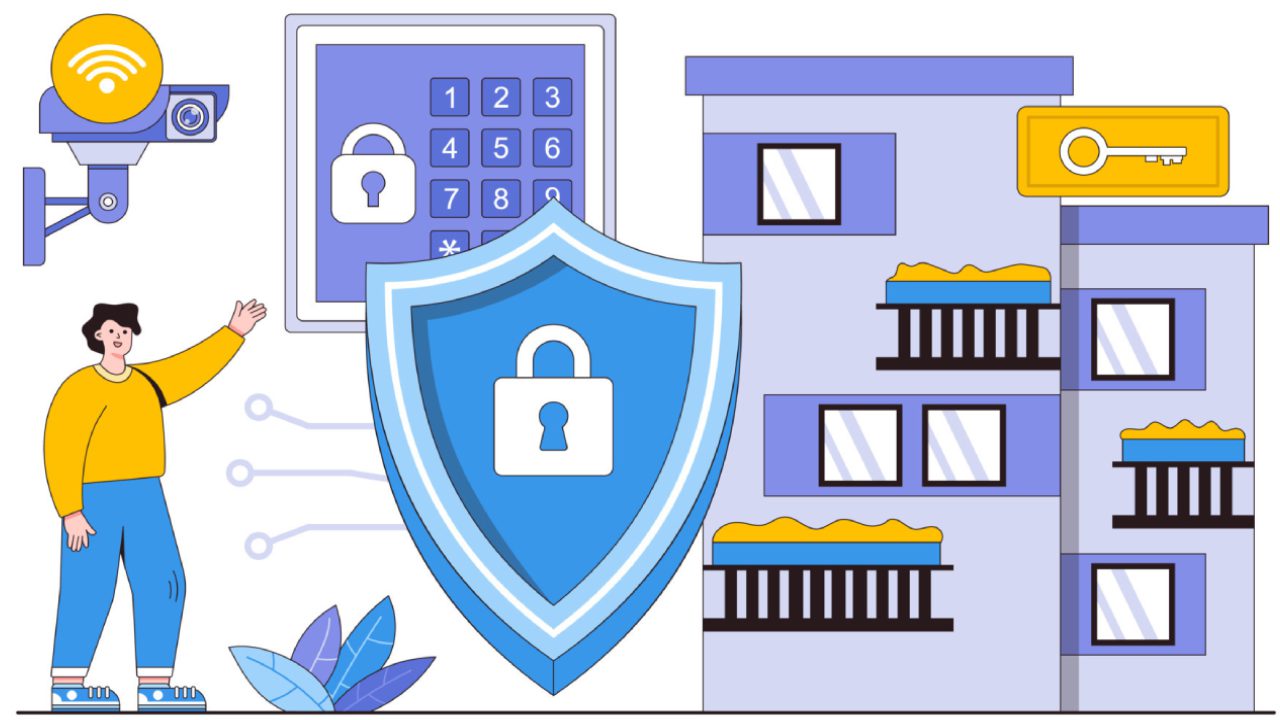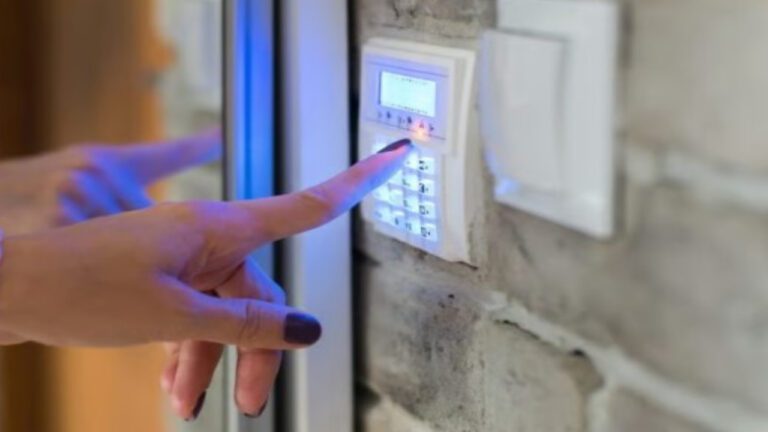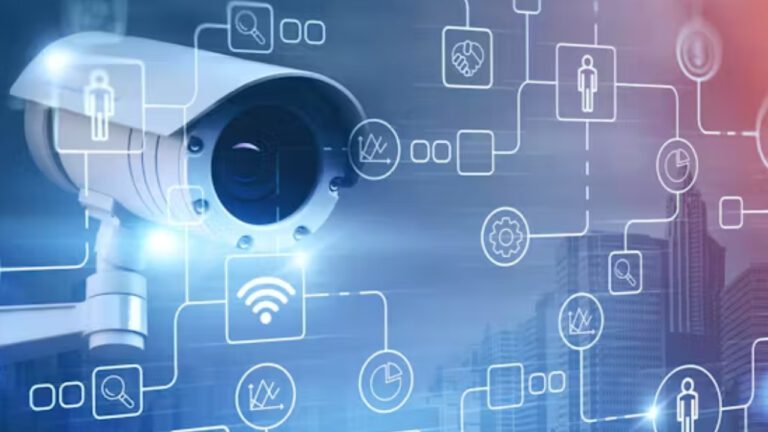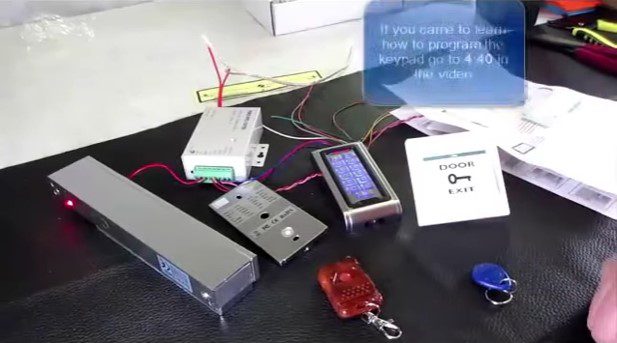In a complex world, protecting your property and assets is more important than ever. Whether you have a small business or a large facility, security solutions are vital. They help keep your property safe. If you want to protect your home, these systems are also important. These solutions do more than using locks and keys. They use advanced technology to control access, watch activities, and respond to threats. This guide will cover different types of access and security solutions. We’ll look at their benefits and how to choose the right one for you. We’ll also explore what the future holds for this important industry.
What Are Access and Security Solutions?
Access and security solutions are various systems and tools. They help control who can enter a property. They also protect against unauthorized access. These solutions include lock-and-key systems. They also include advanced tools like biometric scanners. Integrated surveillance systems are part of this as well. The main goal is to improve security. These solutions make sure only authorized people can enter certain areas. They control who can access specific zones or resources.
Access Control Systems: These are the core of any access and security solution. Access control systems decide who can enter or leave a building, room, or area. They also set the conditions for access. They include keycard systems, biometric readers, PIN code access, and more. Adjust these systems to meet the security needs of any property. Customize them to fit whether it’s a small office or a large industrial site.
Security Systems: Security systems work with access control to keep your property safe. They watch for threats like theft and vandalism. They also protect against unauthorized activities. This includes security cameras, alarm systems, and intercoms. They help with real-time communication and quick responses.
Types of Access and Security Solutions
Many types of access and security solutions are available. Each type meets different needs based on the environment. Knowing the options helps you pick the best system for your needs.
-
Keycard and Key Fob Systems
-
How They Work: Keycard and key fob systems use electronic devices to open specific areas. A reader at the entrance recognizes the unique code in the keycard or fob. Verify the code to grant access.
-
Common Uses: These systems are often used in offices, hotels, and apartment buildings. They offer a convenient and secure way to manage access without the need for physical keys.
-
Benefits: Keycards and key fobs are easy to replace if lost. Reprogram them for new users. They also track entry and exit times. This adds extra security.
-
-
Biometric Systems
-
How They Work: Biometric systems use unique traits like fingerprints, facial features, or eye scans. They identify people based on these traits. Once verified, the system grants access. These systems are secure because they rely on individual biological data.
-
Common Uses: High-security places use biometric systems. These include data centers, research labs, and government buildings. They ensure strict control over access.
-
Benefits: Biometric systems are hard to fake. Each person’s features are unique. This provides strong security. Biometric systems remove the need for keys or cards. This lowers the risk of unauthorized access.
-
-
PIN Code Access
-
How They Work: PIN code access systems must users to enter a numeric code to gain entry. Enter the code on a keypad, and the system will unlock the door if it is correct.
-
Common Uses: Use PIN code systems where cards or biometrics are not practical. They are common in small offices, storage rooms, or server rooms.
-
Benefits: PIN codes are easy to change if needed. They provide a simple way to control access without extra hardware.
-
-
Intercom Systems
-
How They Work: Intercom systems let people at the entrance talk to those inside the building. The person inside can then decide whether to grant access.
-
Common Uses: Apartment buildings and gated communities use intercom systems. They are also found in some businesses. They help manage who can enter.
-
Benefits: Intercom systems add extra security. They let property owners or managers check who is visiting. This helps ensure only authorized people enter.
-
-
Security Cameras
-
How They Work: Security cameras check and record activity around your property. Use them to deter potential intruders and provide evidence in case of a security breach.
-
Common Uses: Security cameras are common in homes and businesses. They watch entrances, exits, and important areas inside a building.
-
Benefits: Modern security cameras can work with alarms and access control systems. This creates a complete security solution. They let property owners watch their premises from anywhere.
-
-
Alarm Systems
-
How They Work: Alarm systems detect unauthorized entry or other breaches. They alert the property owner or a security company. Motion detectors, door sensors, and glass break detectors can trigger alarms.
-
Common Uses: Alarm systems are common in homes, offices, and stores. They provide immediate alerts during an intrusion.
-
Benefits: Alarm systems deter intruders. They can work with cameras and access control to boost security.
-
Benefits of Access and Security Solutions
Investing in access and security solutions has many benefits. They do more than protect your property. These systems can make operations run smoother. They also improve convenience and provide peace of mind. Here’s a closer look at some of the key benefits:
-
Enhanced Safety: Access and security solutions increase safety as their primary benefit. Controlling who enters your property helps protect it. Monitoring activity also lowers the risk of theft and vandalism. These measures can prevent other crimes as well.
-
Operational Efficiency: Automated access control systems cut down on the need for security staff. They reduce manual checks and streamline operations. This lets your team focus on more important tasks.
-
User Convenience: Design modern access control solutions with user convenience in mind. Keyless entry and remote access make it easy for authorized people to enter. Simple interfaces ensure smooth access without hassle.
-
Audit Trails and Reporting: Many access control systems track who enters and exits. They have built-in reporting features for this purpose. This information can be invaluable in case of an incident, providing a clear record of events.
-
Scalability: Access and security solutions are scalable. They work well for properties of any size. Customize these systems to fit your needs, whether you have one office or many buildings.
-
Cost-Effective: Access and security solutions must an initial investment. But, they can save money over time. They reduce the need for security staff, cut losses from theft, and improve efficiency.
-
Compliance with Regulations: Many industries have strict regulations about security and access control. Using the right solutions helps meet regulations. This can avoid fines and legal problems.
Choosing the Right Security and Access Control Solutions
Choosing the right access and security solutions needs careful thought. Consider several factors. Here are some tips to help you make the best choice:
-
Assess Your Security Needs
-
Begin by assessing the specific security needs of your property. Think about the property type, needed security level, and possible threats.
-
For example, a retail store may focus on preventing theft. A data center may concentrate on controlling access to sensitive areas.
-
-
Consider the Size and Layout of Your Property
-
The size and layout of your property affect the type of access and security systems you need. A small office might need a keycard system. A large industrial facility may need biometric scanners, surveillance cameras, and alarm systems.
-
-
Budget Constraints
-
Determine your budget before selecting a system. You should invest in good solutions. But, options are available at different price points. Consider both the upfront costs and ongoing maintenance expenses.
-
-
Integration with Existing Systems
-
If you have security measures, find solutions that fit with your current systems. This keeps things running well and saves money by not replacing old systems.
-
-
Ease of Use
-
Choose systems that are user-friendly for both administrators and end-users. A complex system can cause mistakes or misuse, which weakens security.
-
-
Scalability
-
Consider future growth when choosing a system. Choose solutions that can grow with your business. This lets you add new features or expand coverage when needed.
-
-
Vendor Reputation
-
Choose vendors with a good track record. They should provide reliable access and security solutions. Read customer reviews. Ask for case studies. Consult with other businesses for recommendations.
-
Implementing Access and Security Solutions
Setting up access and security solutions needs careful planning. It is a crucial step for protecting your property. Here’s how to ensure a smooth implementation process:
-
Hire Professional Installers
-
Access and security systems can be complex, involving both hardware and software components. Hire skilled installers for your access and security systems. They ensure everything functions as intended and stays secure.
-
-
Test the Systems
-
Test the system to find any issues before deployment. This includes testing access controls, cameras, alarms, and any integration with other systems. Make sure everything works as expected and that there are no vulnerabilities.
-
-
Train Your Staff
-
Train all relevant personnel on how to use the new systems. This includes learning how to use access controls, handle alarms, and report problems. Proper training reduces the risk of misuse and enhances security.
-
-
Regular Maintenance and Updates
-
Access and security systems need regular maintenance to stay effective. Schedule regular checks to ensure everything works well. Apply updates and patches to keep the system secure from threats.
-
-
Check and Adjust
-
After implementing the system, continue to check its performance. Use the system’s reports to track access and find any issues. If necessary, adjust the settings or upgrade components to enhance security.
-
Future Trends in Access and Security Solutions
The access and security solutions industry is always changing. New technology and shifting security needs drive these changes. Here are some trends that are shaping the future of access and security:
-
Increased Use of AI and Machine Learning
-
AI and machine learning are becoming more important in access and security solutions. These technologies can analyze large amounts of data from cameras and access logs. They help detect threats in real-time. AI can also automate responses to security breaches, reducing the time it takes to react.
-
-
Cloud-Based Access Control
-
Cloud-based access control systems are getting more popular. They offer flexible and remote management options. These systems let admins manage access rights. They can check activity and get alerts. You can do all this from anywhere with internet. Cloud-based solutions also make it easier to update and scale the system as needed.
-
-
Mobile Integration
-
Use mobile devices as access control tools. Smartphones can now act as digital keycards. Users can unlock doors and gates with secure mobile apps. This trend enhances convenience and reduces the need for physical cards or keys.
-
-
Advanced Biometrics
-
Biometric technology is improving. New methods are becoming more accurate and secure. New biometric methods are being explored. These include vein pattern recognition and voice authentication. They join fingerprints and facial recognition.
-
-
IoT-Enabled Security Devices
-
The Internet of Things (IoT) is changing access and security. It connects many devices and systems. IoT-enabled security devices talk to each other. They create a more connected and responsive security system. For example, a security camera can set off an alarm or lock a door if it sees something suspicious.
-
-
Sustainability and Energy Efficiency
-
Businesses and people want more eco-friendly options. There is a rising need for energy-saving and green access and security solutions. Solar-powered cameras and energy-efficient lights are becoming more common. Systems that use less power are also on the rise.
-
-
Cybersecurity Integration
-
As access control systems become more connected, cybersecurity is becoming a critical concern. Future access and security solutions will likely have stronger cybersecurity. This will help protect against hacking and other digital threats.
-
Conclusion
Access and security solutions are essential for protecting your property, assets, and people. There are many options available. You can choose from basic keycard systems to advanced biometric and AI-driven solutions. There is a system for every need and budget. First, Assess your security needs. Next, choose the right solutions for those needs. Work with experienced professionals to install and maintain the system. This will help you create a safe environment. It will also protect what matters most and give you peace of mind.
Technology is always changing. Access and security solutions will become more advanced. They will offer more convenience and better security. They will also integrate better with other systems. Stay updated on the latest trends and tech. This helps you choose the best solutions for your property. It keeps you ahead of threats and ensures a safe environment.




